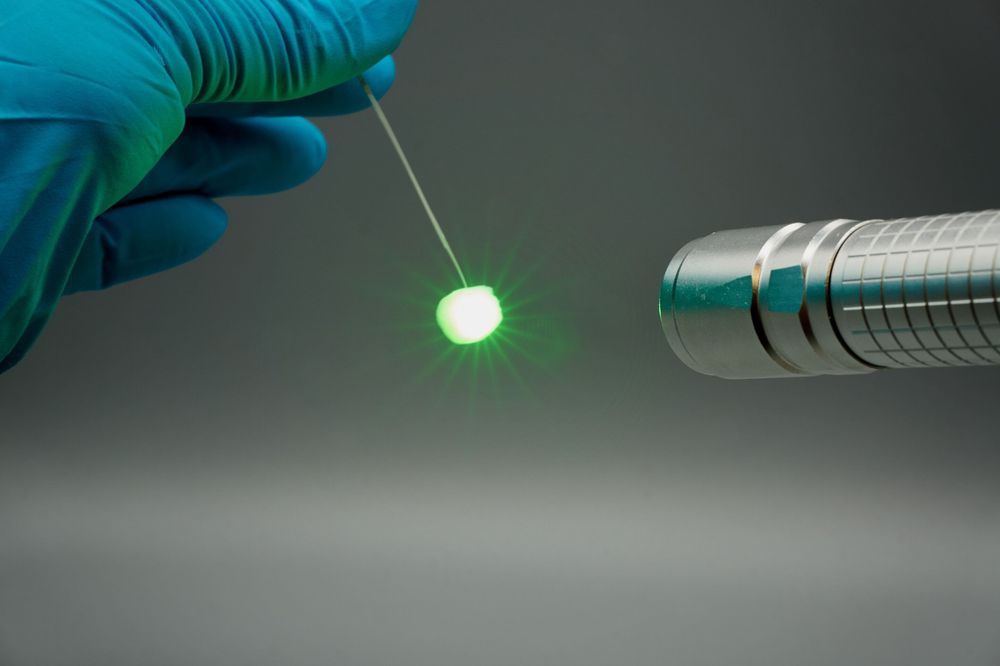With a porosity of 99.99 %, it consists practically only of air, making it one of the lightest materials in the world: Aerobornitride is the name of the material developed by an international research team led by Kiel University. The scientists assume that they have thereby created a central basis for bringing laser light into a broad application range. Based on a boron-nitrogen compound, they developed a special three-dimensional nanostructure that scatters light very strongly and hardly absorbs it. Irradiated with a laser, the material emits uniform lighting, which, depending on the type of laser, is much more efficient and powerful than LED light. Thus, lamps for car headlights, projectors or room lighting with laser light could become smaller and brighter in the future. The research team presents their results in the current issue of the renowned journal Nature Communications, which was published today.
More light in the smallest space
In research and industry, laser light has long been considered the “next generation” of light sources that could even exceed the efficiency of LEDs (light-emitting diode). “For very bright or a lot of light, you need a large number of LEDs and thus space. But the same amount of light could also be obtained with a single laser diode that is one-thousandth smaller,” Dr. Fabian Schütt emphasizes the potential. The materials scientist from the working group “Functional Nanomaterials” at Kiel University is the first author of the study, which involves other researchers from Germany, England, Italy, Denmark and South Korea.
